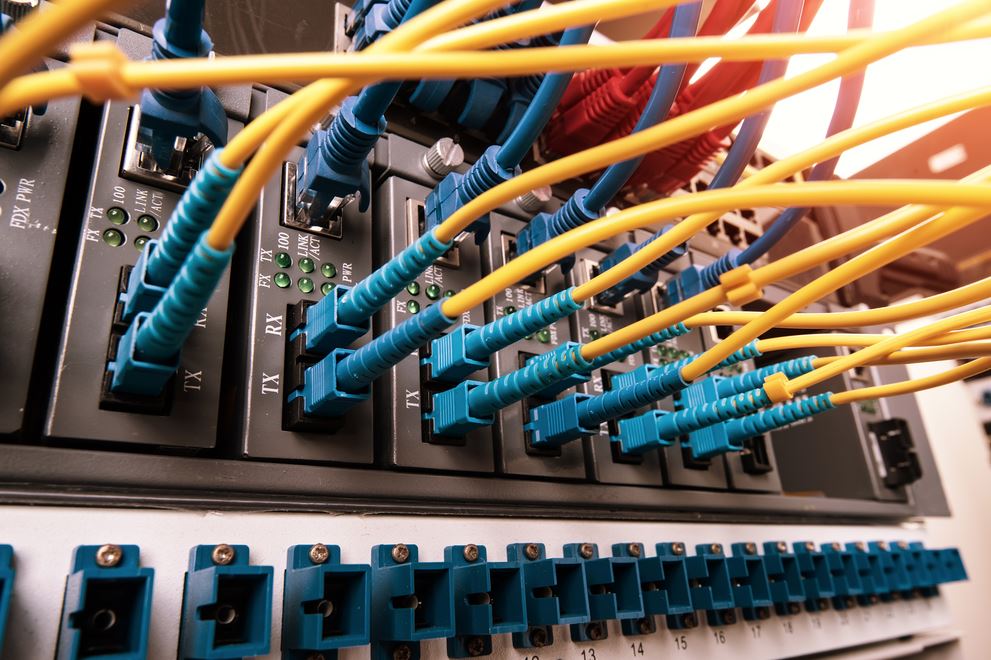The Hidden Backbone of Connectivity
Inside the World of Fiber Optic Networks

Every digital interaction we have today feels instantaneous. We send messages, stream videos, attend virtual meetings, and rarely think about the infrastructure that makes this possible. Beneath this seamless experience lies an intricate system of fiber optic networks, the silent backbone of global connectivity. Without it, the internet as we know it would not exist. Understanding how fiber optics work reveals the incredible engineering that powers our digital world.
What Makes Fiber Optics So Important
Fiber optic cables transmit data using pulses of light instead of electrical signals. Unlike traditional copper wires, which rely on electricity, fiber optics use glass or plastic strands to send information at the speed of light. This makes them exceptionally fast, capable of handling enormous amounts of data with minimal latency.
The demand for fiber optics has grown exponentially because of the sheer volume of data generated daily. Cloud computing, streaming services, smart devices, and 5G networks all rely heavily on high-capacity connections. Copper cables simply cannot keep up with these requirements, and that is why fiber optics have become essential.
The Science Behind the Speed
At the heart of fiber optics is the principle of total internal reflection. Light signals travel through the core of a fiber, bouncing off the internal walls without escaping. This ensures that the signal can move across long distances with very little loss of quality. To maintain performance, cables are often bundled in groups and encased in protective layers to withstand environmental stress.
Modern fiber networks also employ techniques like wavelength division multiplexing. This technology allows multiple signals to travel simultaneously through a single fiber by assigning different wavelengths of light to each data stream. The result is a dramatic increase in bandwidth without requiring additional physical cables.
Global Impact and Infrastructure
Fiber optic cables span continents, oceans, and cities. Submarine cables laid on the ocean floor connect entire regions, enabling real-time communication across the globe. These systems are monumental engineering achievements, often involving thousands of miles of cable and advanced repeaters that keep signals strong throughout the journey.
On land, fiber networks form the foundation of metropolitan connectivity. Internet service providers, businesses, and data centers depend on them to deliver reliable, high-speed internet. As more organizations move to cloud-based systems and remote work becomes standard, fiber infrastructure will only become more critical.
The Role in Emerging Technologies
The future of technology depends on ultra-fast, low-latency connections, and fiber optics provide the foundation for that vision. Technologies like 5G, autonomous vehicles, and virtual reality require immense amounts of data to move quickly and consistently. Wireless systems may deliver the last mile, but they still need fiber optics to support the core network. Without it, these innovations cannot scale effectively.
Artificial intelligence and machine learning systems also benefit from fiber networks. Training advanced models requires transferring massive datasets between distributed computing environments. Fiber optics make this process efficient, reducing the time and cost associated with high-performance computing.
Challenges and Next Steps
Despite its advantages, building and maintaining fiber infrastructure is expensive and time-consuming. Laying new cables involves navigating physical obstacles, regulatory hurdles, and environmental considerations. Rural and underserved areas often struggle to access fiber networks because the cost of deployment outweighs the short-term return on investment.
To address this gap, hybrid solutions are emerging. Technologies like fixed wireless access and satellite broadband complement fiber networks by extending connectivity to regions where laying cables is impractical. However, fiber remains the gold standard for speed, stability, and future scalability.
A Future Built on Light
Fiber optics represent more than just a faster way to browse the internet. They are the nervous system of our digital society, carrying the signals that power communication, commerce, entertainment, and innovation. As demand for connectivity grows, these networks will continue to evolve, becoming denser, faster, and more intelligent.
At BitPulse, we believe that understanding the hidden systems shaping our lives is essential. Fiber optics may not capture headlines every day, but without them, the global economy and the digital experiences we take for granted would collapse. They are not just wires. They are the invisible threads holding our connected world together.
